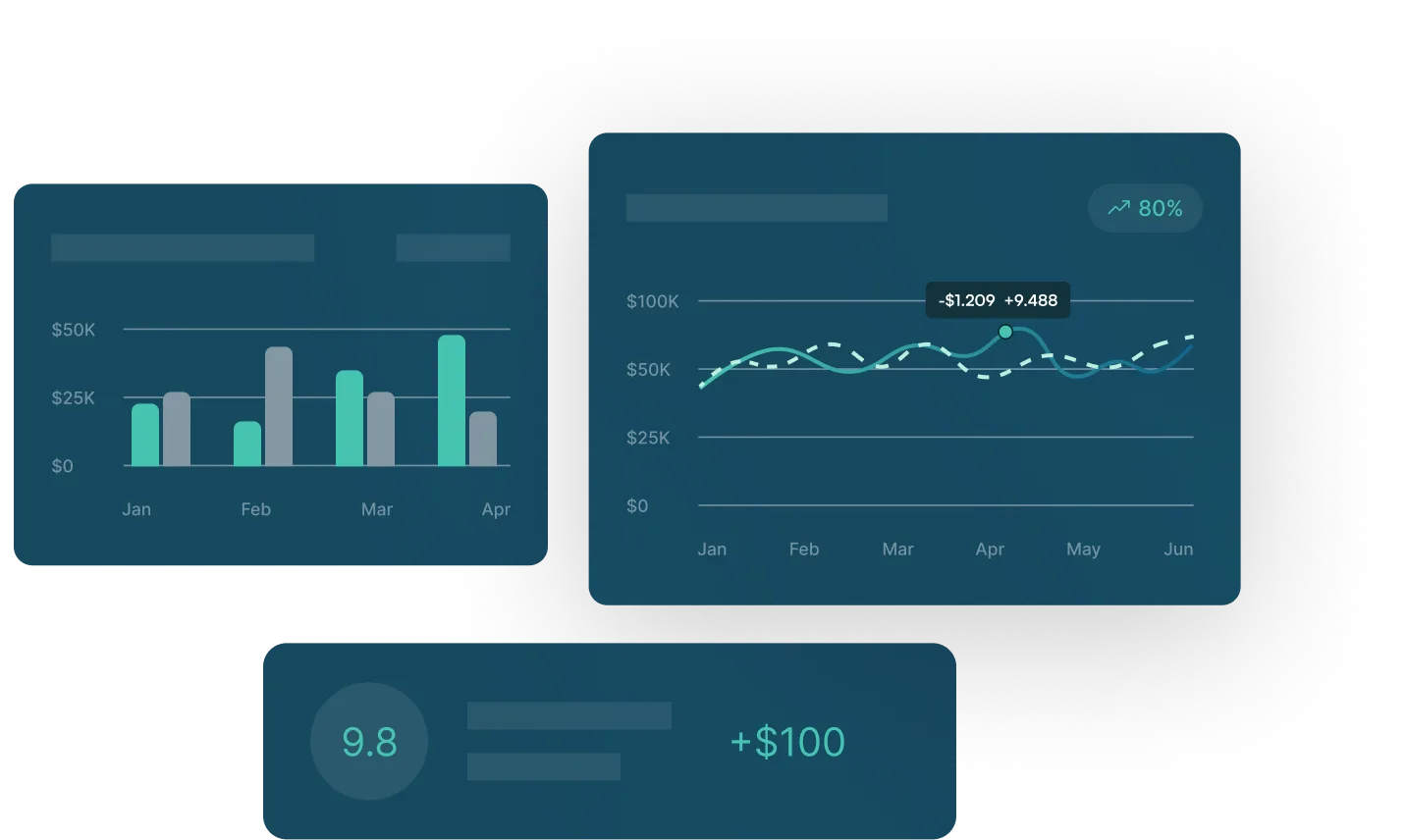Top Benefits & Limitations of FX Hedge Programs


To implement a successful hedge program, it’s important that all parties involved know exactly what the hedge program will provide. This prevents disappointment and level sets expectations with management.
Here are some common benefits FX hedge programs can deliver to your organization, and some limitations you should be aware of.
Benefits of FX Hedge Programs
Benefit #1: Time to React
The first benefit a hedging program provides a company is time to react to changes in rates. Instead of experiencing rates in the financials as they occur, it allows the company to plan for and experience those rates next month, next quarter, or next year. Companies that know what rates are coming can pivot by increasing or decreasing activities, like spending.
Benefit #2: Predictability
Predictability is another benefit of hedging. For example, if a company wants to know the USD value of future foreign operating expenses impacting a dollar functional entity, it can lock down those values by hedging a large percentage of those expenses, and the USD value will be known in advance. This helps companies meet internal and external metrics and effectively communicate the impacts of rate movements to investors.
Benefit #3: Protect USD Margin Dollars and Margin Percent
Many hedgers have an objective to protect either dollar value of reported margin or a margin percentage.
Hedging can deliver on both of these objectives in some cases. In other cases, these objectives cannot be achieved because the historical functional currency decision drives hedge-able exposures and restricts companies in delivering predictability in functional currency (not necessarily USD) results.
For example, a USD functional entity can hedge its foreign currency sales or costs and protect both the USD value of the margin, the margin percent reported, and even cash. However, a US parent making sales through foreign subs may have difficulty protecting the USD value of product margins or even the margin percent depending on the currency denomination of the inter-company transaction and inter-company transfer pricing structure.
Benefit #4: Geography
Preferred profit & loss geography is available to hedgers that elect special hedge accounting. This means that when revenue is hedged at a particular rate, the recording of revenue plus the hedge impact in revenue essentially allows companies to record the hedged item at the hedge rate.
Benefit #5: Smoothing
When hedgers layer in hedges over time, it provides an averaging (or “smoothing”) effect from quarter to quarter and perhaps from year to year. Typically, this strategy won’t give companies the best rate or the worst rate, but rather something in the middle. Companies like this method because they reduce overall volatility and get some level of predictability given the average hedge rate.
Benefit #6: Constant Currency Reporting Alignment
A fresh hedge concept is to mitigate the constant currency impact disclosed in quarterly and annual reporting. This aligns the hedge result reporting with the externally reported financial impact of currencies and smooths year-over-year results.
Limitations of FX Hedge Programs
Limitation #1: “Best Rate”
Hedging doesn’t provide companies with the “best rate.” Any company that can consistently hedge at best rates should focus on FX trading as a business. Options do allow hedgers to take advantage of the better of two rates.
Limitation #2: Cost
Hedging is not free. It can’t be done at zero cost. There is an investment in the processes needed to support trading, relevant controls, accounting and disclosures. The data needed to quantify the exposures must be captured and evaluated. In addition, some currency forward rates are less attractive, and there is a cost/benefit of hedging based on those relationships, which will impact financials.
Limitation #3: Special Hedge Accounting Limitations
To receive the beneficial hedge accounting treatment that allows their transactions to be reported at hedge rates, companies must meet both qualifying criteria and documentation requirements. Exposures may not be eligible to be hedged, even though they present an economic exposure to the company.
For example, transactions where a U.S. company subsidiary sells services in EUR through a EUR functional entity would not meet qualification requirements, even though those transactions pose currency risk to the consolidated company.
Limitation #4: Alignment of Hedge Treatment
When companies transact foreign currency business in foreign functional subsidiaries, hedge accounting is usually limited to inter-company transactions. The gains and losses on those transactions, if hedged at the US parent, result in freezing amounts in USD (or other currency) at the time of the inter-company transaction. The hedged transactions are frequently recorded at different rates, especially if the hedged item is inventory held by the sub over a period end or deferred revenue recognized over the coming year by the subsidiary. This timing mismatch between the recording of the hedged transaction and the earnings impact in consolidation can cause rate slippage that may not be addressed by the hedging program.
Conclusion
There are a number of benefits that hedging provides to manage company risk and the results of foreign activities. However, it is critical to understand the limitations of hedging and the related financial reporting, so expectations across management teams are realistic and achievable.
Top Benefits & Limitations of FX Hedge Programs
To implement a successful hedge program, it’s important that all parties involved know exactly what the hedge program will provide. This prevents disappointment and level sets expectations with management.
Here are some common benefits FX hedge programs can deliver to your organization, and some limitations you should be aware of.
Benefits of FX Hedge Programs
Benefit #1: Time to React
The first benefit a hedging program provides a company is time to react to changes in rates. Instead of experiencing rates in the financials as they occur, it allows the company to plan for and experience those rates next month, next quarter, or next year. Companies that know what rates are coming can pivot by increasing or decreasing activities, like spending.
Benefit #2: Predictability
Predictability is another benefit of hedging. For example, if a company wants to know the USD value of future foreign operating expenses impacting a dollar functional entity, it can lock down those values by hedging a large percentage of those expenses, and the USD value will be known in advance. This helps companies meet internal and external metrics and effectively communicate the impacts of rate movements to investors.
Benefit #3: Protect USD Margin Dollars and Margin Percent
Many hedgers have an objective to protect either dollar value of reported margin or a margin percentage.
Hedging can deliver on both of these objectives in some cases. In other cases, these objectives cannot be achieved because the historical functional currency decision drives hedge-able exposures and restricts companies in delivering predictability in functional currency (not necessarily USD) results.
For example, a USD functional entity can hedge its foreign currency sales or costs and protect both the USD value of the margin, the margin percent reported, and even cash. However, a US parent making sales through foreign subs may have difficulty protecting the USD value of product margins or even the margin percent depending on the currency denomination of the inter-company transaction and inter-company transfer pricing structure.
Benefit #4: Geography
Preferred profit & loss geography is available to hedgers that elect special hedge accounting. This means that when revenue is hedged at a particular rate, the recording of revenue plus the hedge impact in revenue essentially allows companies to record the hedged item at the hedge rate.
Benefit #5: Smoothing
When hedgers layer in hedges over time, it provides an averaging (or “smoothing”) effect from quarter to quarter and perhaps from year to year. Typically, this strategy won’t give companies the best rate or the worst rate, but rather something in the middle. Companies like this method because they reduce overall volatility and get some level of predictability given the average hedge rate.
Benefit #6: Constant Currency Reporting Alignment
A fresh hedge concept is to mitigate the constant currency impact disclosed in quarterly and annual reporting. This aligns the hedge result reporting with the externally reported financial impact of currencies and smooths year-over-year results.
Limitations of FX Hedge Programs
Limitation #1: “Best Rate”
Hedging doesn’t provide companies with the “best rate.” Any company that can consistently hedge at best rates should focus on FX trading as a business. Options do allow hedgers to take advantage of the better of two rates.
Limitation #2: Cost
Hedging is not free. It can’t be done at zero cost. There is an investment in the processes needed to support trading, relevant controls, accounting and disclosures. The data needed to quantify the exposures must be captured and evaluated. In addition, some currency forward rates are less attractive, and there is a cost/benefit of hedging based on those relationships, which will impact financials.
Limitation #3: Special Hedge Accounting Limitations
To receive the beneficial hedge accounting treatment that allows their transactions to be reported at hedge rates, companies must meet both qualifying criteria and documentation requirements. Exposures may not be eligible to be hedged, even though they present an economic exposure to the company.
For example, transactions where a U.S. company subsidiary sells services in EUR through a EUR functional entity would not meet qualification requirements, even though those transactions pose currency risk to the consolidated company.
Limitation #4: Alignment of Hedge Treatment
When companies transact foreign currency business in foreign functional subsidiaries, hedge accounting is usually limited to inter-company transactions. The gains and losses on those transactions, if hedged at the US parent, result in freezing amounts in USD (or other currency) at the time of the inter-company transaction. The hedged transactions are frequently recorded at different rates, especially if the hedged item is inventory held by the sub over a period end or deferred revenue recognized over the coming year by the subsidiary. This timing mismatch between the recording of the hedged transaction and the earnings impact in consolidation can cause rate slippage that may not be addressed by the hedging program.
Conclusion
There are a number of benefits that hedging provides to manage company risk and the results of foreign activities. However, it is critical to understand the limitations of hedging and the related financial reporting, so expectations across management teams are realistic and achievable.

See GTreasury in Action
Get connected with supportive experts, comprehensive solutions, and untapped possibility today.






























.png)





.png)
.png)







.png)












.jpeg)

.jpeg)


.jpeg)






.jpeg)

.jpeg)





.jpeg)


.jpeg)

.jpeg)








.jpeg)



.jpg)





.jpg)

.jpg)





